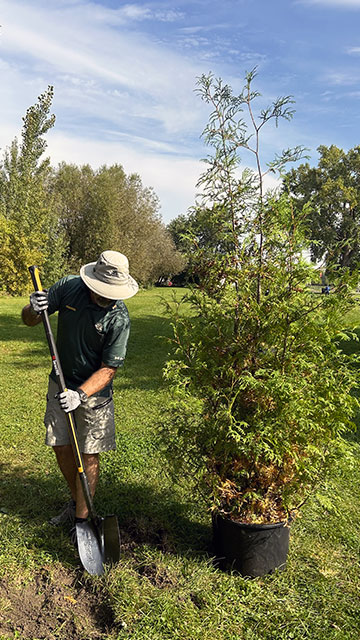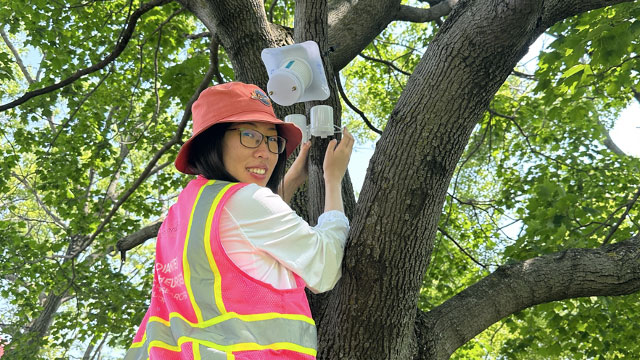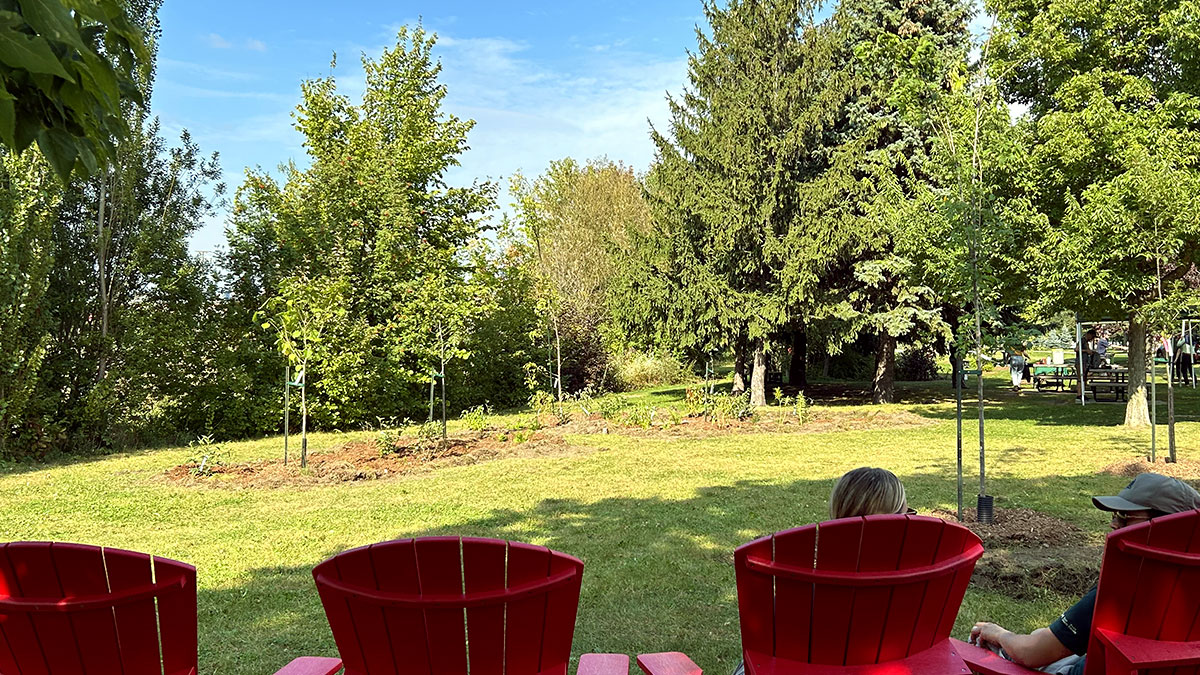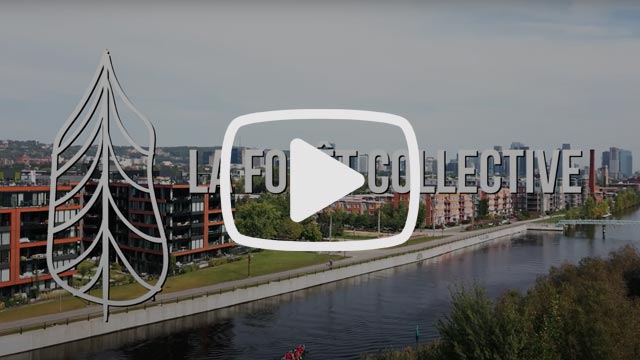
About a hundred volunteers joined forces over several days to help with planting!
La Forêt Collective: A touch of nature at the canal
Lachine Canal National Historic Site
Modified on Wednesday February 12, 2025
Imagine nature reclaiming its rightful place in the heart of the city. That is the idea behind the Forêt Collective, an eco-responsible and collaborative project transforming the Lachine Canal Belt Line rest area into a true haven of biodiversity, just a stone’s throw from downtown Montréal.
The Forêt Collective is more than just a green space: it’s a real urban forest, born of a unique alliance between Parks Canada, the Groupe de Recommandations et d’Action pour un Meilleur Environnementn(GRAME) (website in french only), environmental experts and a community of committed citizens. Together, they are breathing new life into this emblematic historic site, where bygone industry is making way for natural rebirth. Every tree planted and every plot of land regenerated symbolize a collective commitment to a greener, more sustainable future.
The initiative has taken shape thanks to QuoVadis—a real estate development company focused on sustainable development that supported high school student Évelyne Bismuth’s project, fuelled by her passion for ecology. With the support of environmentally conscious partners and collaborators, they have created a communal space dedicated to raising awareness about ecology and encouraging citizens to take part in reforestation and environmental education initiatives.

The Forêt Collective is a living place, a place for people to meet and learn, where they are invited to understand the importance of preserving our natural heritage. Participatory activities and educational workshops will raise awareness among both young and old about the richness of biodiversity, while providing a peaceful setting for reconnecting with nature.
The project involved planting a variety of native trees and plants adapted to the local climate. These include maples and red oaks, linden trees, elms and various shrubs, as well as pollinator-friendly species to encourage biodiversity and ecological resilience. These plants will also improve air quality, help regulate temperature and provide habitats for local wildlife. Once an industrial relic, the Lachine Canal National Historic Site is gradually being transformed into a symbol of ecological renewal, where past and future coexist in harmony.

Concordia University’s Ziter Urban Landscape Ecology Lab has also been involved as a key scientific partner to strengthen the Communal Forest’s impact. Sensors have been installed on site to monitor various environmental data, such as variations in temperature, biodiversity and air and soil quality. Concordia researchers will monitor these parameters over several years to assess the effects of urban reforestation and identify best practices for improving the resilience of local ecosystems. The results of this collaboration will be shared with the community to raise awareness about environmental issues.

In the long term, the Parks Canada team hopes to see the Forêt Collective evolve into a thriving ecosystem that not only enriches local biodiversity, but also serves as an example of what communities can achieve by working together to protect the environment. We hope that this initiative will inspire other similar projects, where every member of the public can feel involved in preserving and enhancing our natural heritage.
Stay "In the loop"
Don't miss any of the activities and events taking place in Parks Canada's historic canals in Quebec, subscribe to our newsletter "In the loop".
Related links
- École en réseau - To learn connected to others
- A safe and pleasant winter trail
- 5 good reasons to come work for Parks Canada this summer!
- A Colourful Summer at Lachine Canal!
- Reopening of the Lachine Canal - 20 years already!
- Team Up and Clean Up
- Algae and aquatic plants
- 10 reasons to base your business at the Lachine Canal
- The History of a Little Coaster
- New electric vehicle
- Learn-to Paddle
- Newly Renovated Canals
- Public Art at the Hangar 1825
- Planting of trees
- Cyclo-pedestrian roundabout
- Inspirational women
- Date modified :
